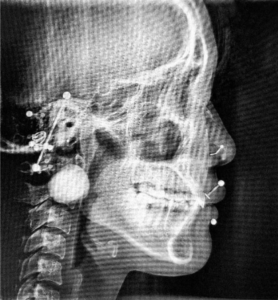Piercings and magnetic resonance imaging (MRI)
It is known: piercings and magnetic resonance imaging do not go hand in hand. But why? One should know that these machines have large magnetic fields. Think of the machine as a giant magnet - any conductive metal could be a risk to you and the proper functioning of the machine. Among the most conductive metals are silver, copper, gold and nickel. These are all metals that will often be found in the alloy of a jewelry for find at a jeweler, hence why removing all your jewelry is necessary. Where do the body piercing jewelries stand in all this?

Here is an image of a scan of a person with piercings. Source: Google Images
Well, good quality piercing jewelry will be made of implant grade titanium, often ASTM-F136 titanium. It is a metal that does not react to magnetic fields and is therefore safe for this type of machine. Always be sure to check with your piercer before jumping into the subject. Sometimes, some piercers can give you the "Mill Certificate", which certifies the propertiesof titanium, its biocompatibility and its non-ferromagnet ism. Sometimes some medical imaging technologists will let you keep your jewelry on. Unfortunately, as with any service, they have insurance and sometimes medical imaging technologists won’t be willing to take the risk, even though your jewelry is safe for MRIs and is not at risk that could damage the machine.
In an ideal world, if you want to be sure that your holes do not close, you should make an appointment with your piercer and install glass jewelry on it. It is a highly biocompatible, non-ferromagnetic and 100% safe jewel for your examination. In addition, it poses no risk of keeping it in the long term, so if you have an operation where you need to remove your jewelry for more than 24 hours, you will not have to worry about your piercings.